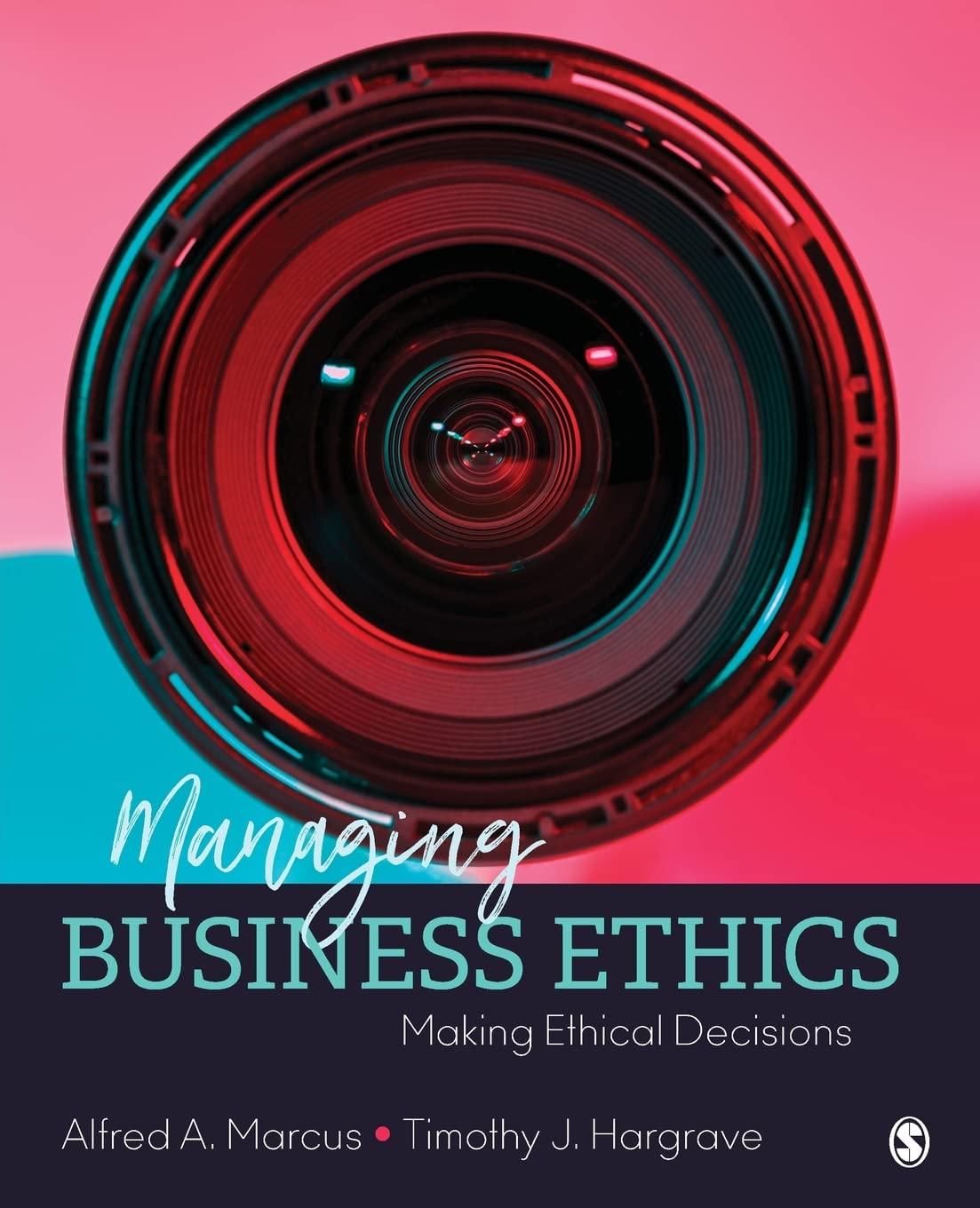Question
Since the storm had originated over the warm waters off Mexico, Jaeger concluded from the weather reports that there was a fifty-fifty chance that the
Since the storm had originated over the warm waters off Mexico, Jaeger concluded from the weather reports that there was a fifty-fifty chance that the upcoming rainstorm would be heavy or that it would just be the much preferred light rain. Over the past, the development of the botrytis mold had also proven to be pretty uncertain, rather random, with a 50% chance of occurring. If the botrytis mold did not form, however, Jaeger would leave the grapes to ripen more fully. With luck, the grapes would reach 25% sugar, resulting in a wine selling for around $14.00 wholesale. Even with less favorable conditions, the sugar levels would most likely increase to 20%, yielding a lighter wine selling at around $12.00. Jaeger thought these probabilities were equally likely. In the past, sugar levels occasionally failed to rise above 19% but he considered the probability of having this now negligible.
When heavy rain would strike, a small part of the crop would be lost. However, the part of the crop that could be harvested would also absorb much of the rainwater. Jaeger estimated that the final result would be about a 10% increase in total berry juice with extremely low fruit concentration, however. This would yield a very thin wine that would sell wholesale for $7.00 per bottle only. Mr. Jaeger estimated the damage to Freemark Abbey's reputation from bottling and marketing an inferior wine would cost $50,000 in advertising to mitigate. Freemark always had the option of not bottling a wine that was not up to standards. It could sell the wine in bulk, or it could sell the grapes directly. These options would generate revenue at about an equivalent of $4.00 per bottle, but would at least avoid damaging the winery's reputation. If Freemark Abbey harvested the Riesling grapes now, they would obtain 1,000 cases and the wine could be sold at $10.5 per bottle. At this point in time, there was still a lot of uncertainty regarding the wholesale price of a botrytized Riesling. Mr. Jaeger recalled having read a recent article in WineToday, the local Napa Valley wine trade magazine, about historic wholesale prices for botrytized Riesling. The article mentioned that when the botrytis mold had developed, in current dollars, wholesale prices had been as high as $40.00 in 1 out of 4 occasions and as low as $24.00 with the same probability. In 1 out of 2 occasions, there had been a medium price of $28.00. Unfortunately, the same process that resulted in increased sugar concentration also caused a 30% reduction in total juice. The higher price was therefore partly offset by a reduction in quantity. Although fewer bottles would be produced, there would be essentially no savings in vinification costs. The costs to the winery were about the same for each of the possible styles of wine and were small relative to the wholesale price.
a. How much value does Freemark Abbey obtain from its Riesling grapes if Mr. Jaeger decides to have them harvested before the storm? Justify your answer with calculations.
b. How much value does Freemark Abbey obtain from its grapes if Mr. Jaeger decides to bottle the wine after heavy storm? Justify your answer with calculations.
c. How much value does Freemark Abbey obtain from its grapes if Mr. Jaeger decides to sell the grapes in bulk after heavy storm? Justify your answer with calculations.
d. How much value can Freemark Abbey obtain from its grapes if Mr. Jaeger decides to bottle the wine after light rain (make a distinction between all cases when the botrytis mold attacks the grapes as well as when the mold is not formed)? Justify your answer with calculations.
e. Create a decision tree in the provided Excel template with Precision Treeto to decide whether to harvest the Riesling grapes right away or to wait for the storm.
f. What is the best strategy for Freemark Abbey that optimizes the expected value? And what is this value? The trade magazine WineToday also recently ran an article about Mr. Harvey Borz of Borz's Direct Mail Mold Spores. Harvey sells botrytis spores and guarantees that if you use his spores and it rains lightly, botrytis mold will develop. One application would be enough to treat Freemark Abbey's Riesling grapes and would cost $14,000. Mr. Jaeger must pay the $14,000 upfront (before the storm).
g. Would you advise Mr. Jaeger to buy the mold spores? What would be the EMV if he decides to buy the mold spores? Include a decision tree to justify your answers.
Step by Step Solution
3.37 Rating (156 Votes )
There are 3 Steps involved in it
Step: 1
a To calculate the value of the Riesling grapes if Mr Jaeger decides to have them harvested before the storm we need to consider the potential outcomes and their probabilities If the storm does not oc...
Get Instant Access to Expert-Tailored Solutions
See step-by-step solutions with expert insights and AI powered tools for academic success
Step: 2

Step: 3

Ace Your Homework with AI
Get the answers you need in no time with our AI-driven, step-by-step assistance
Get Started


